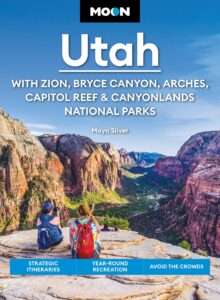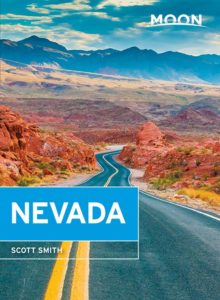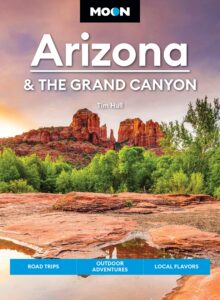Hoover Dam and Lake Mead
Approaching Hoover Dam from the Nevada side, in the eight miles from Boulder City you pass a peculiar parade of electrical generators, transformers, and capacitors all secured by cyclone fencing topped by razor wire and barbs to keep out intruders. A major 10-year reconstruction and road-expansion project was completed in 2010, taking traffic off the dam and moving it onto a bypass and concrete-arch bridge over the Colorado River. One of the biggest and highest in the world, the impressive bridge has been named to honor both onetime Nevada governor Mike O’Callaghan and Arizona’s pro football star Pat Tillman, who volunteered for duty as an Army Ranger in Afghanistan, where he was killed by friendly fire in 2004. At the parking area at the foot of the bridge, there’s a small memorial to Tillman and a detailed explanation of the new bridge’s engineering and construction. From there, a pedestrian footpath heads across the canyon, giving good views of the distant lake, the massive dam, and the river below.
Because the main US-93 has been diverted around it, if you want to see Hoover Dam up close, make your way to the Visitor Center (702/494-2517, daily, $15, plus $10 parking), which cost nearly as much as the new bridge. The steep admission price buys you a half-hour film, a self-guided museum tour, and a ride down the $20 million elevators that cut through the rock, ending up inside the dam, where you can gape at the humming turbines, which at peak times generate some 2,000 megawatts of electricity, enough to supply a million homes and still have enough juice left over to light up the Las Vegas Strip. Beyond the visitors center, take a walk across the top of the gargantuan wedge of Hoover Dam: It’s nearly a quarter mile across, 726 feet high, 660 feet thick at the base—all accomplished with a mere seven million tons of concrete.
Upstream from the dam spreads Lake Mead, the largest artificial reservoir in the country. With a capacity of more than 26 million acre-feet or nearly nine trillion gallons, Lake Mead irrigates some 2.5 million acres of land in the United States and Mexico, while helping to control the river’s seasonal flooding. However, recent droughts and increased demands for its water have depleted Lake Mead to about half its full capacity, leaving some docks and fishing piers (and potentially the city of Las Vegas) high and dry. Despite these problems, thousands of water-skiers and house-boaters flock to the popular recreation site year-round.
Related Travel Guides
Travel Map of the Border to Border Route through Nevada

















